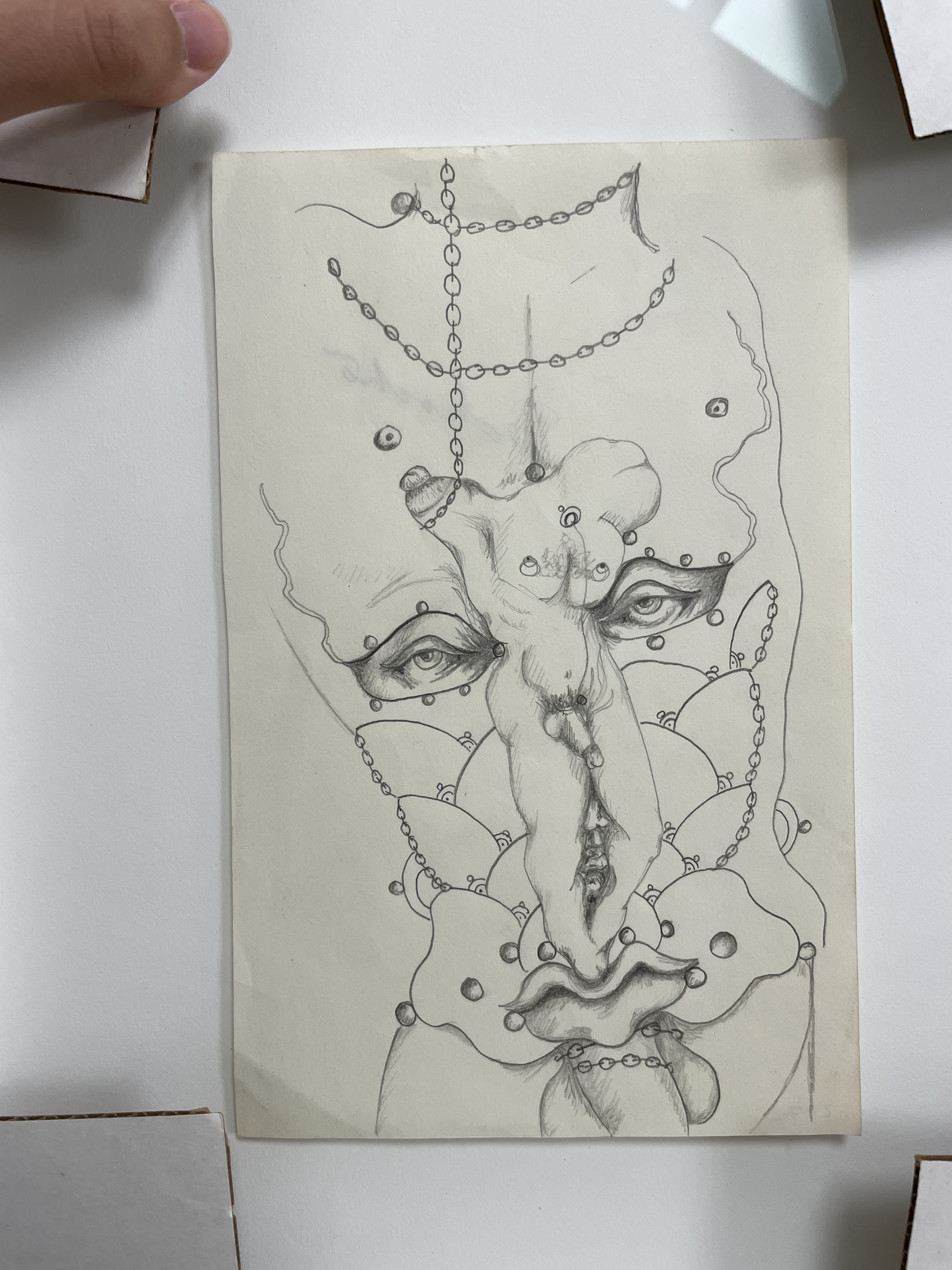
28.10.24 - Q&A: MVS students Lauren Warrington and Lina Wu share insights on their summer internships
Internships are a vital part of the educational journey for Master of Visual Studies (MVS) students at the Daniels Faculty. This summer, Lauren Warrington and Lina Wu, both now in their second year of the MVS Studio Art program, took on unique internships to further their artistic research.
Lina worked at the Kinsey Institute at Indiana University, delving into the archive to explore themes of desire, sexuality and art, while Lauren divided her time between artist Karen Tam’s Montreal studio and the Chung Collection at the University of British Columbia’s Rare Books and Special Collections, focusing on early Chinese Canadian immigration.
The MVS program emphasizes interdisciplinary exchange and mentorship, allowing students to connect theory with practice. In this interview, Lina and Lauren share how their experiences have impacted their studies—providing insights into the practical applications on their artistic practice and the importance of hands-on experience in their research.
What drew you to your selected internships this past summer?
Lina Wu: I was talking to faculty member Jean-Paul Kelly about Austin Osman Spare's collection of drawings, Psychopathia Sexualis, and he mentioned that the folio is housed at the Kinsey Institute. These drawings immediately caught my interest and I decided to reach out to the Institute because they have a huge collection of both contemporary and historical art and artifacts. My own research and artistic practice is very much about drawing desire and sexuality so I thought it would be a good fit.
Lauren Warrington: I was hoping to gain experience working in a professional studio and to also spend time at an archive related to my research, which focuses with the early Chinese Canadian immigration and the Chinese diaspora of the Canadian Prairies.
Tell us about your experiences. What were you working on? Any favourite memories?
Lina: Half of my time at the Kinsey Institute was spent cataloguing the work of John Schacht (1938-2009), a gay artist who was based in Chicago, Iowa, and Indiana working primarily in drawing and painting. It was fascinating getting to know his life story and charting his artistic development through his journals, sketchbooks, and correspondences. The other half of my time was spent looking through the archives for my own research. My work is very much grounded in zines and cartooning, so I think my favourite moments were spent looking through their punk zine collection. They also house underground comix artist Lyn Chevli's artist files, and I loved browsing through her work and her comics collection.
Images courtesy Lina Wu taken at the Kinsey Institute at Indiana University.
Lauren: I was extremely fortunate to have the opportunity to assist Karen Tam with the production of work for the Toronto Biennial, her solo show Sea of Clouds at the Illingworth Kerr Gallery in Calgary, and a group exhibition at the Chinese Canadian Museum in Vancouver. I have admired Karen Tam’s work since 2008, when she created a restaurant installation in my hometown’s Chinatown at a Chinese restaurant that had been turned into an artist-run space. Having the chance to learn from her felt surreal in many ways. In addition to assisting her with production, I also had the opportunity to discuss my research. We spoke about our shared areas of study, creating work from family narratives, and how she mobilizes information from archives to create work. On the practical side, she also shared research tips specific to UBC’s Rare Books and Special Collections.
The day after I returned from Montreal, I flew to Vancouver to visit the Wallace B. Chung and Madeline H. Chung Collection and began my work under the supervision of archivist Claire Malek. I went with the goal of learning about the conditions in which my maternal ancestors immigrated. The first of which was during the construction of the Canadian Pacific Railway, the second during Head Tax, and the third following the end of Head Tax.
How will your internship experience impact your studies?
Lina: Working at the Kinsey Institute has allowed me to explore the use of kink and BDSM imagery in my drawing practice. Not to mention it's exposed me to so many diverse and influential queer and feminist artistic practices, each with their own methods of working which I'll be turning to for inspiration.
Lauren: Although I was there (the Chung Collection) for only a week, I managed to take approximately 5,000 photos. From this material, I created a research log that will anchor my work for this year. Leaving the archive, I felt immense gratitude for the Chung Collection, a collection rooted in community rather than institution, for having preserved so many documents that are often discarded. Having the opportunity to engage with these materials, filling gaps in my family’s story, was deeply generative. It’s difficult to express how meaningful it was to think with so many new objects and documents, several of which provided unexpected rabbit holes to explore, in addition to the context I was initially seeking.
Do you have any advice for other students considering an internship?
Lauren: My advice to students looking for an internship is to reach out to faculty for guidance and to not be afraid to contact the people or places you most desire to work with.
Lina: Don't be afraid to advocate for your own research interests when finding an internship. Even if you think your interests are niche or unique, there is definitely an intellectual community out there that can help you further your thinking. Also, don't be afraid of asking questions. I'm always self-conscious because I feel like I have too many questions, but there were so many experts at the Kinsey Institute whose institutional knowledge I wouldn't have otherwise been able to access.
Banner: (left) portrait of Lauren Warrington by Carey Shaw; (right) portrait of Lina Wu by Carson Van Vliet.




